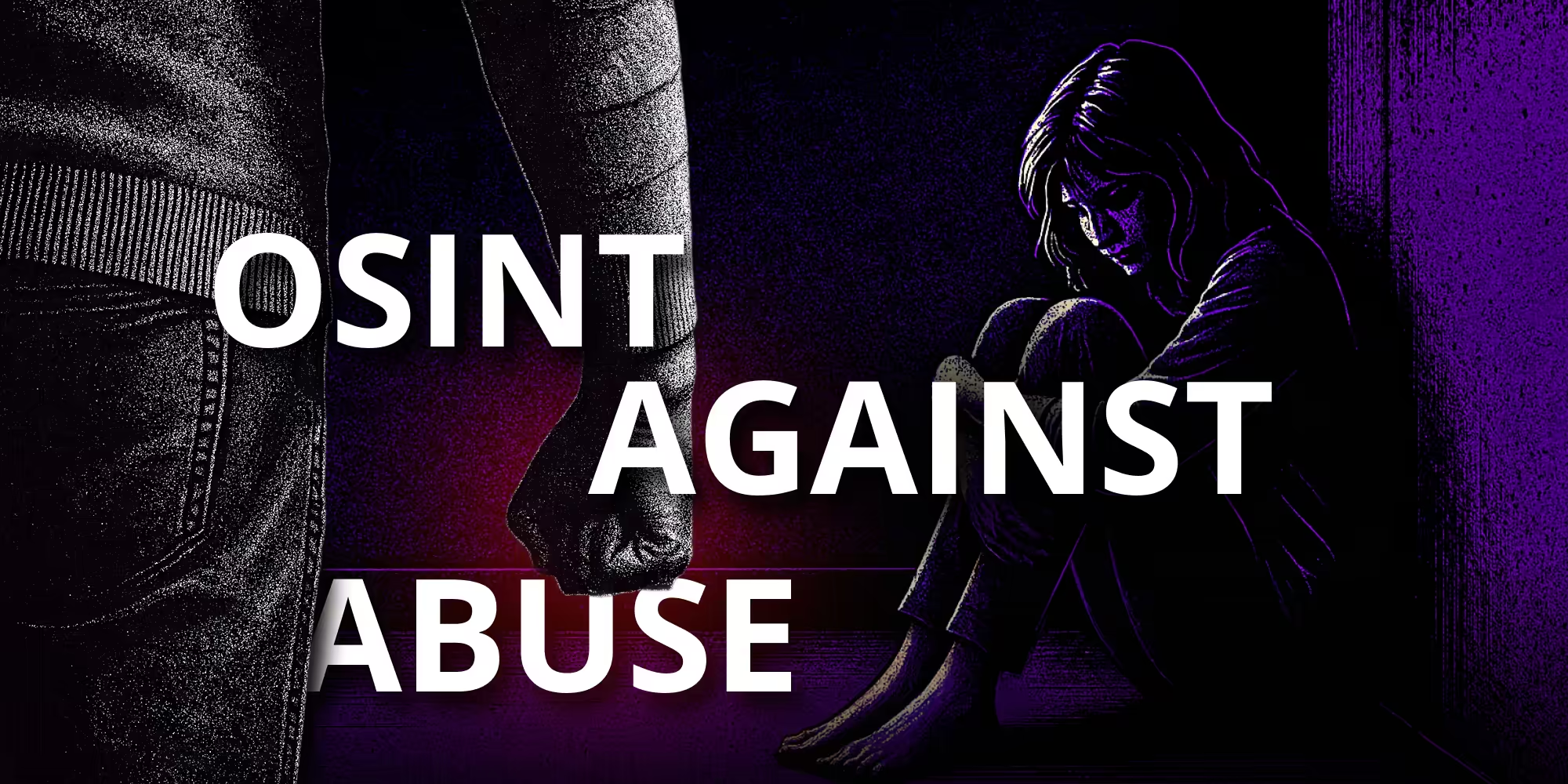Try the world's most popular OSINT platform for free. Elevate your enterprise investigations with unmatched accuracy.
Up to 75% of domestic violence femicides happen after a victim has left. Can OSINT change outcomes for survivors?
“She was very innocent, so kindhearted but just a kid really… a gentle soul who would not even hurt insects… This is not just Harshita’s murder, it is the murder of me and my mother and my father. We are nothing without her.” – Sonia Dabas, sister of domestic violence victim Hershita Brella [Source: The Guardian]
One day in November 2024, the body of a young woman was discovered in a parked car on the streets of Ilford.
24-year-old Harshita Brella had recently emigrated from India. She had been murdered by her husband four days before, at their home in Corby, Northamptonshire. A post-mortem suggested she had died by strangulation. The images released by police of a silver Vauxhall Corsa suggested that the car had been used to transport her body, abandoning her 100 miles away from home, and thousands of miles from her family.

Harshita was not a victim of random violence, or a so-called ‘crime of passion’. Harshita’s murder was the culmination of her husband’s campaign of domestic violence and mental torture. Just days before, she had reported Pankaj Lamba to police, and charges had been filed against him for his abuse.
Although the police had placed Harshita in protective accommodation, this had not been enough. Harshita had tried to escape, but she didn’t make it – because Pankaj Lamba was still at large. Soon, Harshita’s abusive husband had become her murderer.
Speaking to Metro, Kate* describes doing everything right after reporting her abusive ex-partner Joe* for attacking her at eight weeks postpartum. Kate had her address marked with police, flagging that she was vulnerable or at-risk; she had undergone the lengthy family court process to secure a non-molestation order (NMO) that stopped her ex “using physical violence and intimidating, harassing or pestering behaviour” towards her or her daughter.
In a horrific echo of Harshita’s tragedy, none of this mattered when Joe attacked her in a public place. She was lucky enough to make it home, with her abuser still in pursuit. He then terrorized her for hours: banging on doors and windows, threatening to murder her and the pregnant friend at home with her as she called 999. When the recording was submitted to court, police advised it be played to judges only, to protect Kate’s parents from hearing it.
“I said there’s absolutely no way I could defend myself, my daughter and my friend if he does get into the house… You can hear the banging and it sounds like he’s coming through the door.” – Kate*, a 36-year-old domestic abuse survivor. [Source: Metro]
Marie*, a 39-year-old advanced nurse practitioner, describes spending more than 18 months in fear after reporting her abuser – the man that beat her, sexually assaulted her and suffocated her before becoming her stalker. Charlotte’s ex breached his restraining order after a seven-year incarceration and wrecked the house they had shared. Stacey* became housebound when her abuser Mark* exploited the system to achieve bail, despite a history of breaching non-molestation orders with violence. She describes all the measures she took to keep safe, including finding her eight-year-old son a new school when he became too frightened to go out in the playground. Still, Mark broke into her home, beating her unconscious in front of her children, and stabbing her in the mouth with a screwdriver. As a knock-on effect, Stacey suffered the recurrence of a brain condition and can no longer work as a safeguarding co-ordinator, protecting other victims.
“There was blood smeared up the wall… There was cat litter and broken glass in the kid’s toys. He destroyed the kid’s birth books from early years to five.” – Charlotte*, former CEO of I Choose Freedom and domestic abuse survivor. [Source: Independent]
Even if their story doesn’t end like Harshita’s, living with an abuser at large – despite having reported him to police – is a reality for a growing number of UK domestic abuse survivors. Survivors are often angry at police, but the toxic combination of court backlogs and patterns of perpetrator absconding can be insurmountable hurdles. Sometimes abusers are just too evasive to pin down. They are often enraged by getting ‘caught’, and are some of the most likely offenders to run away from justice. One in five will attempt to take revenge. Like Pankaj Lamba, some are even absconding before measures can be put in place at all.

It’s an often-cited statistic that leaving or reporting is the most dangerous time for a victim of domestic abuse. Up to seventy-five percent of domestic violence femicides happen after a victim has left an abusive partner. Organizations like Victim Support and Centre for Women’s Justice director Harriet Wistrich remind us that “when a woman reports… it is often the most dangerous moment of all”, but also that the UK relies on a “creaking” criminal justice system, enforcing laws to protect women that are “worth little more than the paper they are written on”. Three year court delays leave perpetrators free, or with ample opportunity to abscond and wreak havoc – even if they breach restraining orders or have known violent histories. As a result, women report less: “they are simply too scared of perpetrators to report. Some of them know that reporting to the police will increase their risk of harm.”
“I didn’t sleep or eat in the weeks before the trial was due to go ahead. When it was thrown out and I then got the date [eighteen months later], I was devastated… He is still out there. Yes, he is on a tag but he is socialising - and he is socialising with other women…” – Stacey*, 40-year-old safeguarding co-ordinator and domestic abuse survivor. [Source: Metro]
Not only are domestic abusers making their victims’ lives hell by absconding, but they could be disrupting the process of justice altogether. Police data suggests 52% of absent-suspect cases were later dropped as a result of victims withdrawing their reports, whether out of fear or manipulation. In a review of 1,000 domestic abuse cases, London’s Met Police found that 71% of abusers will flee. When the suspect remained at the scene (287 cases), arrests were made 90% of the time. If the suspect had already left (713 cases), the arrest rate dropped to 47%, even after the abuser had been tracked down. Even after arrest, cases with absconded abusers are likely to fold. It’s worth noting that Harshita’s murderer was able to flee across enough jurisdictions to do just this; facing a much more obtuse legal system in India, authorities had to rely on archaic ‘dowry death’ laws, arresting Lamba’s parents in his place.
It should not be the case that survivors suffer for doing exactly the right thing. While court delays are unlikely to change, fighting absconding could be the answer – and OSINT can be part of this solution. Using SOCMINT, geolocated images, pattern-of-life tracking and digital footprint analysis, OSINT-powered law enforcement can catch war criminals, traffickers, and more. Today, the same tools are tracking down evasive abusers.
The UK legal system can’t always protect women from delayed justice, but with tools like OSINT Industries, UK police can keep up with those who try to outrun it. By empowering law enforcement, OSINT can help prevent tragedies like Harshita’s happening again.
Meet Dom K., Police Staff Digital Media Investigator.
“I’m not aware of any other services as effective as OSINT Industries…” – Dom K., Police Staff Digital Media Investigator. [Source: OSINT Industries]
Police Staff Digital Media Investigators (DMIs) like Dom K. are the UK’s experts in uncovering digital evidence. These analysts bridge the gap between the digital world and traditional policing, sourcing leads from device data on phones, laptops, CCTV systems, and cloud accounts – including in high-risk investigations like child exploitation, homicide, stalking and domestic abuse. They are also the UK police’s frontline experts in open-source intelligence (OSINT).
OSINT is vital when abuse, control, or criminal activity is documented online or via devices.
However, to secure justice for domestic abuse survivors when a suspect absconds, a DMI might need to conduct high-level SOCMINT, extract deleted messages or call logs, comb video footage, or use GeoINT to prove breaches of restraining orders or the location of an abuser.
When it comes to working with OSINT, Dom finds OSINT Industries is “one of the primary tools” he uses for various tasks vital to securing justice for victims and survivors: open-source investigations, communications data applications, and attributing breakthrough details like phone numbers and email addresses. OSINT Industries has become so enmeshed in his team’s work that we are “one of the tools covered in… [Dom’s constabulary’s] in-house open-source training course”. It’s here that Dom first encountered the tool that’s now his “go-to.”
To “give something back”, and “promote [our tool] to others within law enforcement who may not be aware of its existence”, Dom decided to contribute how OSINT Industries helps his force change outcomes for survivors. This is one such story.
Fear to Freedom: How OSINT Finds Those Who Flee
This year, Dom was tasked with assisting his constabulary’s South division. His task was to locate an “outstanding offender”: an abuser, Nick*, who had absconded during the lengthy wait for trial. He was now wanted for breach of court bail, as well as domestic violence and coercive control offences against his partner Sarah*.
High-profile cases like the murder of mathematician Poppy Devey Waterhouse, alongside awareness-raising storylines in popular UK media like The Archers, led to coercive control becoming criminalised in the UK under the Serious Crime Act 2015. Recorded cases of this devastating abuse – tactics like isolation, intimidation, or surveillance used to dominate a partner and strip away their sense of freedom and autonomy – quickly reached 43,000 recorded offences as of 2022–23. Yet prosecutions remain scarce: in the South East, arrests followed just 40% of reports, with only 7% leading to charges in Surrey, and a mere 3% in Sussex. This is partly down to the subtle nature of abuse that leaves no visible injuries, but also the fact that case evidence leans heavily on victim testimony; testimony that becomes vulnerable when a traumatized survivor fears a suspect at large.
"Coercive control sucks the life out of you - the violence is very sparing - but they do now and again as they need you to know that they can if they chose to. So that threat is always hanging over you… And it's the shame of it. It's happened to you. It's not your fault at all.” – Helen Walmsley-Johnson, author and coercive control survivor. [Source: BBC]
Nick was “actively evading police” and had been doing so for weeks. Dom knew that as a result, not only was this offender an enormous safeguarding concern towards Sarah, but a threat to the process of justice too. He began reviewing all available intelligence on the suspect, conducting deep research across police systems and databases to see what he could find.
Here, Dom could identify several phone numbers associated with the suspect he was seeking. On their own, they had limited utility – it wasn’t immediately clear which of these numbers was actually in use, especially by a man on the run. However, Dom was able to turn to OSINT Industries to analyze the identified phone numbers.
Dom ran each number through an OSINT Industries phone lookup, “hopefully… to find which was most likely to be the current number”. Our tool quickly returned results. By revealing social media and other platform accounts tied to one of the numbers, Dom was able to isolate which number had the most recent activity – and which number returned profiles that matched Nick’s first and middle names exactly.
Cutting vital time and manpower when a survivor was living in a state of urgency, Dom now had a solid lead.
With this intelligence, Dom was ready to make a communications data application. This is a digital request made by law enforcement through the National Anti-Fraud Network (NAFN)’s Communications Data Workflow System, allowing police to lawfully access deeper comms data – like financial information, DVLA records or metadata that prove when, where and to whom communication occurred. Due to compliance requirements in the Investigatory Powers Act 2016, police need certain data beforehand to pinpoint what they need from this centralised gateway for sensitive data access. Thanks to his OSINT Industries search, Dom was able to make a request for social media subscriber data, call data, and most crucially, location data.
It was this data that “led directly” to Nick’s arrest and detention.
This data meant Sarah no longer had to live in fear, and could focus on healing from her ordeal. This data changed the outcome of her story. As Dom emphasized to us, without OSINT Industries it would have been “unlikely” that any of it could have occurred: determining the active phone number, justifying the communications data application, and protecting Sarah after she did the right thing.
Data for Justice: Why Police Are Turning to OSINT First
“It’s a great tool… It needs promoting wider.” – Dom K., Police Staff Digital Media Investigator. [Source: OSINT Industries]
With just one identifier - like Nick’s mobile number - OSINT Industries could instantly equip Dom with a network of associated emails, social media accounts, usernames, and activity patterns that keep the often-sticky wheels of justice in motion. This is what makes ours the first tool Dom turns to to deliver vital info about missing suspects, possible witnesses, and even the most important group for law enforcement: victims and survivors.
As in the case above, Dom’s most common OSINT Industries search will start with a mobile number or email obtained from traditional police systems. From here, what once took days or weeks now takes minutes. When it’s increasingly difficult to make movements without leaving a trace, OSINT is fast becoming one of the most effective weapons UK police have to stop repeat harm and pursue those who try to disappear.
Dom’s stellar work with OSINT Industries exemplifies how OSINT is revolutionising modern policing and reshaping outcomes for domestic abuse survivors in particular. Unlike almost any other type of crime, domestic abuse survivors are most at risk after they escape. The terrifying reality of this hard-to-prosecute but devastating harm (where perpetrators almost inevitably try to abscond and may continue intimidation using burner phones or anonymous accounts) needs a higher-tech solution.
Most importantly, using OSINT to find abuse suspects at large allows law enforcement to restore control of a situation that could end in tragedy; and restore control to survivors who have risked everything by reporting. In the same way that recognition of less physically-visible crimes like coercive control and digital abuse has improved with time, so have tactics to fight back.
Harshita didn’t have OSINT on her side. But now, others might.
“These women shouldn’t just be considered yet another statistic… These women mattered. They were someone’s daughter, sister, friend, mum, aunt, and much-loved colleague. Each had a name and a life, before it was brutally stolen from them – more often than not, by someone they once trusted and loved…” – Claie Wilson, Metro deputy editor speaking on the This is Not Right campaign. [Source: Metro]
If you have been – or feel you may have been – affected by the issues above, contact:
National Domestic Abuse Helpline
24/7 free and confidential support from Refuge.
www.nationaldahelpline.org.uk
0808 2000 247
Women's Aid
Provides refuge, advocacy, and online chat support for women.
www.womensaid.org.uk
Men's Advice Line
Support for men experiencing domestic abuse.
0808 801 0327
Galop
Support for LGBT+ survivors of abuse and violence.
www.galop.org.uk
0800 999 5428
*Names have been changed to protect individuals, either for this article or in works cited.
Start your free enterprise trial
Get Free TrialReveal what's behind any contact, instantly.
We want to hear your story!
Inspire Others
Educate about what OSINT can do.
Positive Publicity
Share your success with the world.
Support #OSINT4Good
Be part of the OSINT story.



